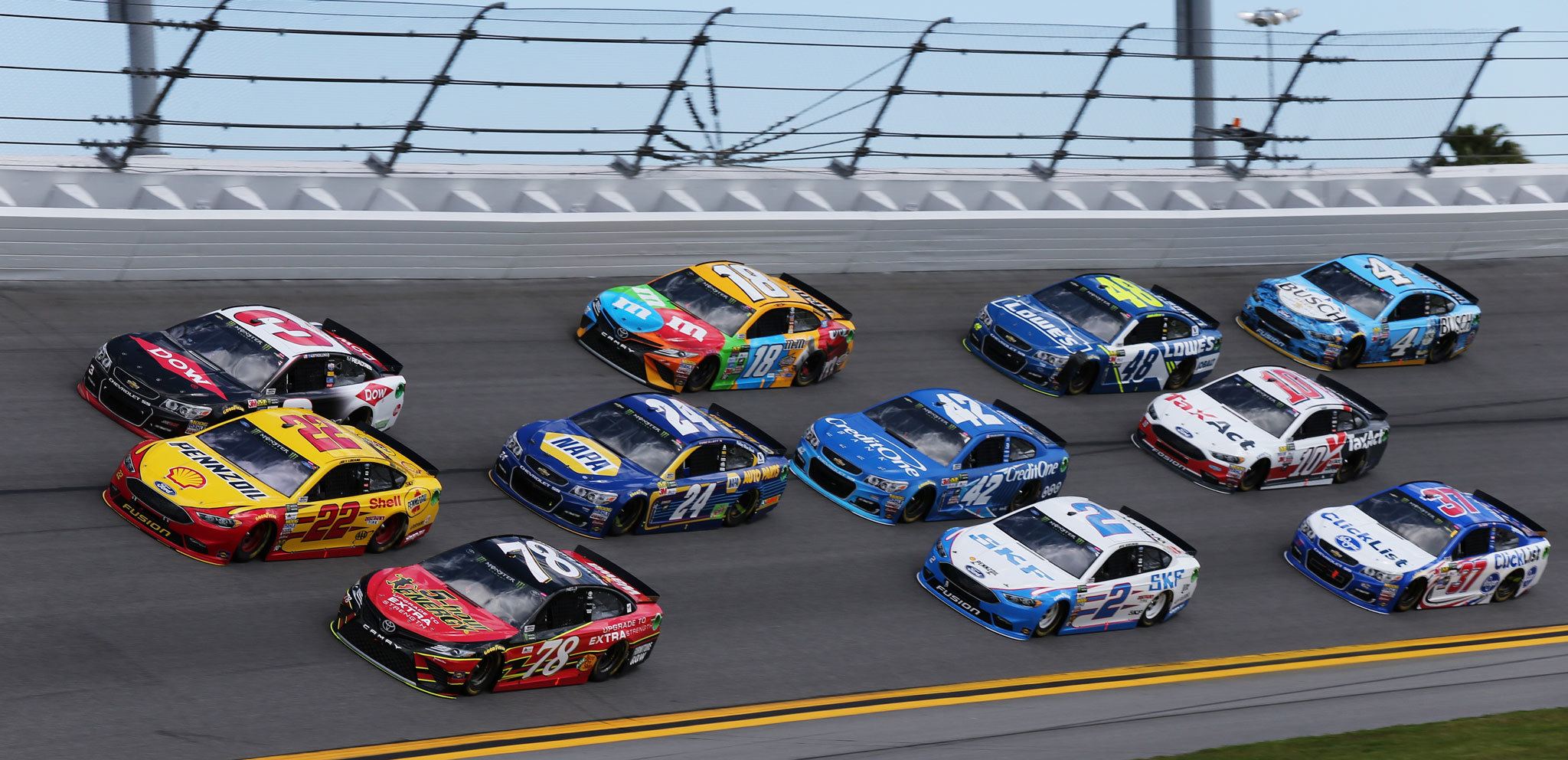DAYTONA BEACH, Fla. — NASCAR has made a series of changes for the 2017 season ranging from a new top-series sponsor to how the cars are set up to race.
It’s a continuing effort to reverse a trend that has seen the sport’s profile dip in recent years, with television ratings and attendance in a steady decline.
With the season set to begin in Sunday’s Daytona 500, it’s worth looking at what’s changed — and what specifically precipitated each move.
New sponsor
What’s the change? Monster Energy came aboard as the sport’s top series title sponsor in December.
Why the change? Sprint’s 10-year contract with NASCAR ended in 2016. But NASCAR is also looking to attract a new, more youthful demographic and Monster stepped forward with the intentions of delivering that. The company has already created somewhat of a ripple at Daytona with appearances by its “Monster Energy Girls” and their tight-fitting, black outfits. (The outrage might be justified, but they are certainly no more revealing than what a typical NFL team’s cheerleaders wear.) It’s symptomatic of the sponsorship straits in which NASCAR found itself that terms of the deal with Monster haven’t been revealed.
New aero package
What’s the change? NASCAR lowered the downforce on Cup cars.
Why the change? NASCAR did the same thing in 2016, hoping to create more competitive and entertaining racing with an aero package that allowed drivers more freedom to maneuver their cars through traffic. It went so well that the package is being tweaked again, with changes to the spoiler, splitter and rear deck fin.
New race and points format
What’s the change? Races in all series will be broken into three segments, with points awarded for winning and finishing in the top 10 of the first two segments, in addition to regular points awarded at the end of the race.
Why the change? The hope is that by chopping up the race three ways, there will be more urgent and compelling competition throughout, especially with championship points available in each segment.
New playoff implications
What’s the change? Some points won in the regular season will count toward the 16-driver playoffs (the postseason, incidentally, is not being referred to as the Chase anymore). One bonus playoff point will be awarded to the winners of the first two stages and the race winner will receive five playoff points. Points won during the playoffs will be carried over into the next stage, instead of advancing drivers being reset with the same number of points. The title will still be decided by the top finisher among the final-four drivers at Homestead-Miami Speedway.
Why the change? With points not carrying over during the playoffs, drivers weren’t rewarded for doing well in previous races and stages. This takes care of that, and also allows drivers to stockpile valuable playoff points during the regular season.
New medical team
What’s the change? A rotating group of doctors will travel to all Cup races.
Why the change? NASCAR wanted a consistent team of doctors — a system similar IndyCar and Formula One — on hand so drivers will have familiarity with whom they’re receiving care.
New concussion protocol
What’s the change? Drivers will be required to take a Sports Concussion Assessment Test (SCAT-3) in the infield medical center after crashes that might have resulted in head injuries. A driver whose car goes to the garage after an accident will be required to go to the infield care center.
Why the change? The risk of having a driver with concussion symptoms returning to the race had simply become too high.
New eligibility requirements
What’s the change? Cup drivers with more than five years of experience will be limited to racing in 10 Xfinity races and no Cup drivers will be permitted in the Xfinity playoffs.
Why the change? People got tired of seeing Cup drivers dropping down and winning so much in the lower series, depriving younger racers of that chance.



